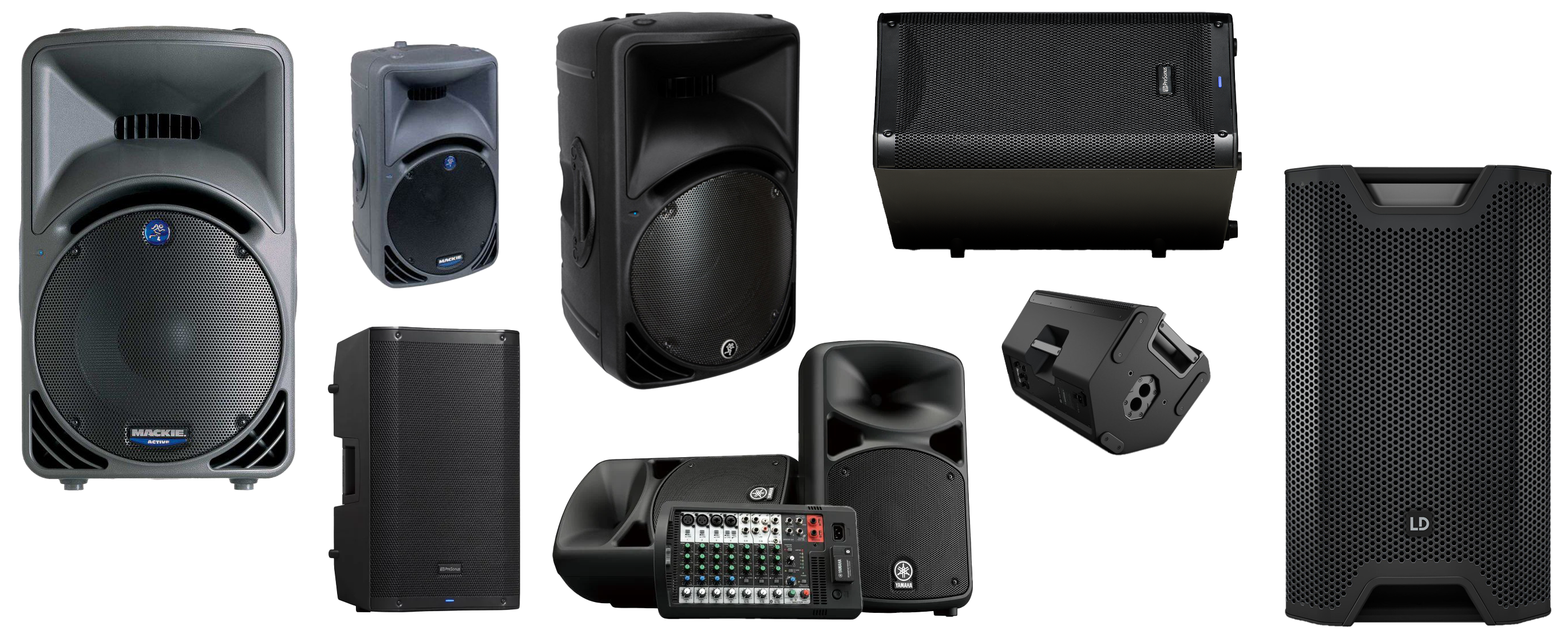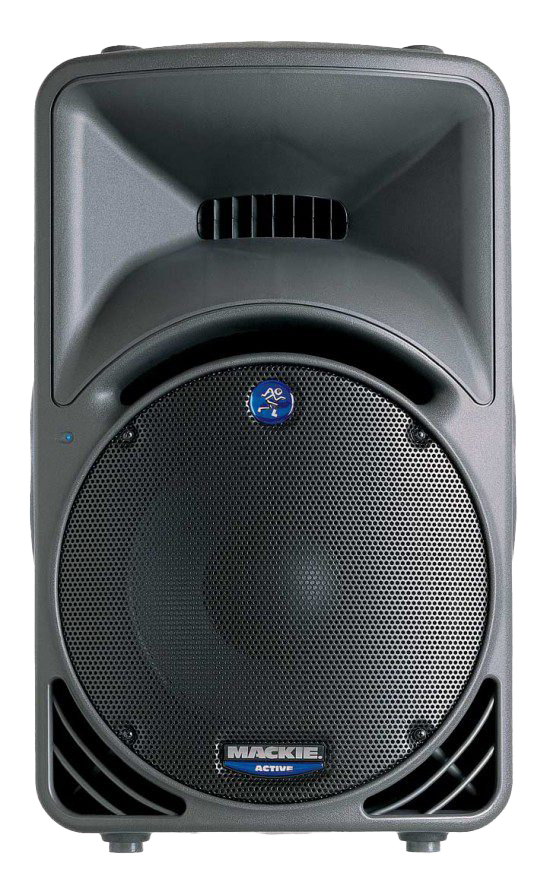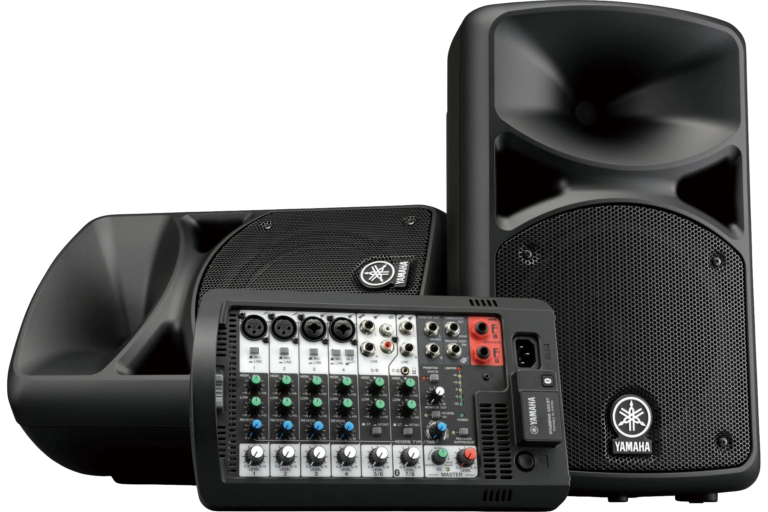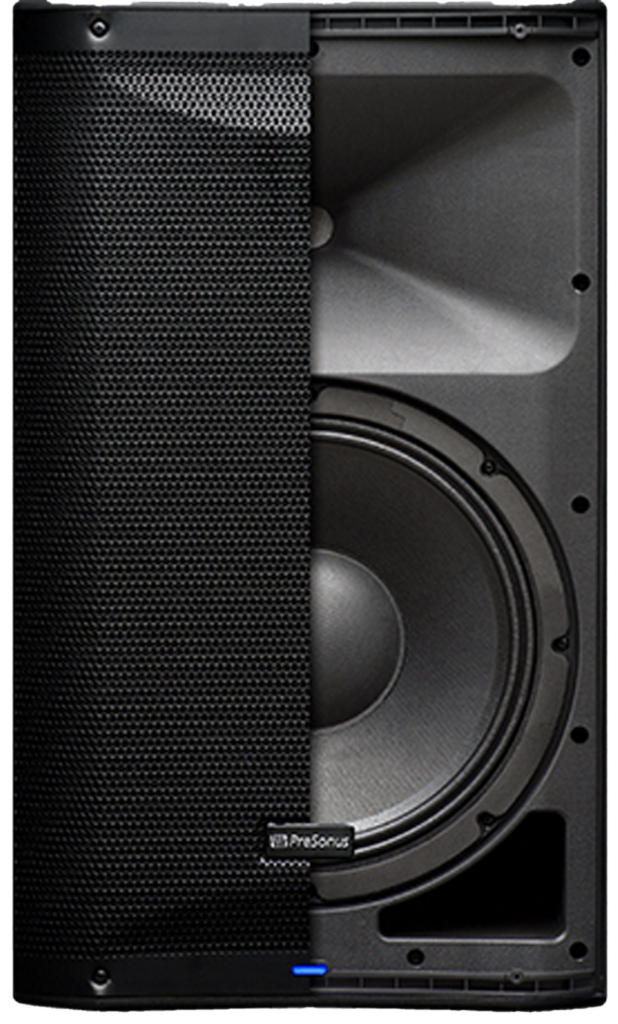

You’ve got your dream guitar and a lovely tube amp to play it through. Your bass player has a solid, thumping rig to drive the low end. Your drummer has honed their kit to the essentials for a small stage gig. You’re all ready to go. Not so fast! What PA speakers are you going to use so the audience can hear your heartfelt lyrics? Let’s look at your options.

PA requirements depend on three factors. First, the size of the venue, second, how many in the audience and third, how many microphones or instruments you need to put through the front of house speakers. There are also two basic PA configurations which can be summarised as ‘vocal PA’ and ‘everything PA’. This informs the decision you’ll have as to which mixer to use – we’ll look at choosing a mixer in the next article.
Let’s begin with a couple of common scenarios. Firstly, a duo playing in a small pub with one acoustic guitar, two vocals and some percussion such as a tambourine or a shaker. Second, a four-piece band with drums, bass, two electric guitars and three vocals playing in a social club or larger pub. In the first case there is an audience of around thirty people, in the second, there’s fifty or sixty.
We’re going to need front of house speakers in both scenarios. There are two main types: passive speakers, which require a separate amplifier, and powered speakers, which have a built-in amplifier. My preference is for self powered as they are much more convenient than having to bring along a power amp as well. Conducting a quick search online will show you that there are basically three price ranges for powered speakers. Cheap, mid range and expensive! As always, you get what you pay for. At the expensive end, you have brands such as QSC, EV, HK or Bose. At the cheap end you have Alto, Behringer, the box, Sub Zero and many others. Then there are dozens of mid range offerings. The ideal would be a mid price range speaker that sounds awesome.

One of my all-time favourites is the Mackie SRM450. These are, unsurprisingly, 450 Watt, self-powered speakers. Having a built-in amplifier means you just have to plug them into the mains and connect a cable from your mixing desk. Two of them would give you 900 Watts of amplification which is loud! I’ve used two SRM450s on small stages at festivals and they easily fill a large room or a small field. They are punchy, clear and reliable. I bought two of the first version SRMR50s in 2009 and a second pair in 2012 and, other than a little bit of soldering, they have worked flawlessly ever since. The newer V2 and V3 versions are not as highly regarded as the originals, and frankly just don’t sound as good although they are still excellent speakers. However, if you do see a pair of V1s at a good price, even at 15 years old, they’re probably worth it. The Mackie SRM450 and its punchy little brother the SRM350 are definite contenders, much preferred to their replacements in the Mackie Thump range which feel light, and sound ‘boxy’.
LG Systems ICOA12As are another mid-price range speaker that I really like. We have a pair in the Bunker rehearsal room as front of house. At 300 Watts, they’re not quite as punchy as the Mackies but they do sound great. We also have a pair of older LG GT12As which sound warm and full and are often my goto speakers for front of house where space isn’t an issue. They are quite large! LG Systems make solid kit that is well engineered and sounds good.
Size is important both for storage and for carrying in and out of venues. Yamaha have their range of StagePAS mini systems. These are not self powered but come with a detachable mixer / power amplifier that stows in the back of one of the speakers for transport and storage. These are excellent self-contained PA systems, perfect for small to medium sized venues. With four mic inputs and various line inputs, the mixer is more than adequate for a duo or trio, especially as it has a reasonably good reverb on board. In fact, the StagePAS would be perfect for our first scenario with two vocal microphones and the acoustic guitar plugged in. The StagePAS comes in a couple of variations, from 400 Watts to 600 Watts. They’re compact, easy to carry and sound excellent and are good value for money as an all-in-one solution.

Now, about Watts. The numbers don’t mean what you might think they do. Watts are a unit of power, that is, of work done. It takes a certain amount of power to lift an object or to walk upstairs or to use a hammer. The work done when talking about speakers is that of moving air. Speakers use power to move back and forth and in doing so, cause the air in front of them to move. This causes air pressure changes to create sound waves that make our ears respond in a way that our brains interpret as sound. So, the more Watts, the greater the sound pressure level or SPL. The greater the SPL, the louder the volume the speaker creates. So far, so good. However the relationship between Watts, SPL and volume is not linear. Doubling the Watts does not make the volume twice as loud. In fact, to make something appear to sound twice as loud, you would need to increase the Watts by ten times. So, if you have a 100 Watt powered speaker, you would need a 1000 Watt powered speaker to achieve double the perceived volume. To make it four times louder, you would need a 10,000 Watt speaker. In real world terms, this means that a 450 Watt speaker is not really much louder than a 300 Watt speaker, and a 1000 Watt speaker is not that much louder than a 500 Watt speaker. This is why you end up with huge numbers of Watts for large festival PAs and, conversely, why a 15 Watt guitar amp can sound deafening in a small venue.
If size and space really is an issue for you, it may be wise to consider an even simpler option for our first scenario. An acoustic guitar amp such as an AER comes with two channels. You plug your guitar in one and your vocal mic in the other. They come with a built-in reverb and have plenty of oomph, even in largish venues. For our acoustic duo, using one such amp each is a really good solution. As well as AER, Ashdown, Fender, Boss, Fishman, Blackstar and others make acoustic amps. The Ashdown Acoustic Radiator, now discontinued, is fabulous and is much sought after on Ebay. I have one that literally fell apart from heavy use. I glued it all back together and still use it to this day and it still sounds awesome. Their current offering, the Woodsman also gets good reviews but I’ve not tried one. I have tried a Blackstar Sonnet that delivers well in this arena. It is not as warm sounding as the Ashdown but has some useful features such as a feedback notch-filter.

The acoustic amp solution is fine if you’re an acoustic performer playing acoustic guitar and singing but it’s not going to cut it for our second scenario. As the man said, we’re going to need a bigger boat. However, maybe not that big. We needed a couple of small stage monitors to replace the aging Mackie SRM350s we have in the studio. After a bit of research, I went for a pair of Presonus AIR10s. These are full-range self powered speakers that pack a mighty punch at 1200 Watts. Yet these speakers are amazingly small with 10” drivers rather than the 12” drivers in most of the others I’ve mentioned so far. What is more surprising is that the AIR10s are full range with a low end of 55Hz up to a high of 20kHz. So, unless you’re producing some serious sub-bass, these are going to do just fine in our second scenario. Even if we mic the kick drum, we’re still all good as a bass drum is typically between 60Hz and 90Hz.
To be honest, Presonus AIR10s are now my new favourite front of house speakers and I have recommended them to several other people who have bought them and are equally impressed. They are small and light, easy to carry and crucially, sound as good, if not better than my trusty Mackie SRM450s. When you look at the price difference, there is literally no contest. Presonus also make a 12” and 15” version along with a 15” and 18” sub woofer if you really need that low end.
When it came to equipping Malvern’s newest venue, The Hideout, with a PA system, the AIR10s were my first and only choice. They are perfect for this small venue whether there are just a few in for an open mic or if the place is rammed with a full band.
Whether you’re thinking of buying new or secondhand, there are some really good powered speakers out there that can be sourced without breaking the bank. Also, I now plan to replace my old Mackie SRM450s and LG GT12s with AIR10s and AIR12s just as soon as I can. I am an unashamed Presonus convert! Oh, and does anyone want to buy some Mackies?

STOP PRESS: Amazon are doing an insanely good deal on the Presonus AIR10s. In a special Spring Offer, they are available at just £195.79 each!
Ralph Tittley
March 24th 2024